Expression and chloroplast targeting of cholesterol oxidase in transgenic tobacco plants
- PMID: 11457962
- PMCID: PMC116468
- DOI: 10.1104/pp.126.3.1116
Expression and chloroplast targeting of cholesterol oxidase in transgenic tobacco plants
Abstract
Cholesterol oxidase represents a novel type of insecticidal protein with potent activity against the cotton boll weevil (Anthonomus grandis grandis Boheman). We transformed tobacco (Nicotiana tabacum) plants with the cholesterol oxidase choM gene and expressed cytosolic and chloroplast-targeted versions of the ChoM protein. Transgenic leaf tissues expressing cholesterol oxidase exerted insecticidal activity against boll weevil larvae. Our results indicate that cholesterol oxidase can metabolize phytosterols in vivo when produced cytosolically or when targeted to chloroplasts. The transgenic plants exhibiting cytosolic expression accumulated low levels of saturated sterols known as stanols, and displayed severe developmental aberrations. In contrast, the transgenic plants expressing chloroplast-targeted cholesterol oxidase maintained a greater accumulation of stanols, and appeared phenotypically and developmentally normal. These results are discussed within the context of plant sterol distribution and metabolism.
Figures
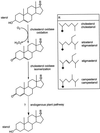

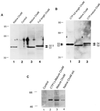
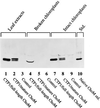
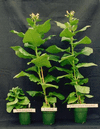
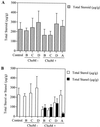

Similar articles
-
Steroid profiles of transgenic tobacco expressing an Actinomyces 3-hydroxysteroid oxidase gene.Phytochemistry. 2004 Nov;65(22):2967-76. doi: 10.1016/j.phytochem.2004.09.012. Phytochemistry. 2004. PMID: 15504431
-
Cholesterol oxidase: a potent insecticidal protein active against boll weevil larvae.Biochem Biophys Res Commun. 1993 Nov 15;196(3):1406-13. doi: 10.1006/bbrc.1993.2409. Biochem Biophys Res Commun. 1993. PMID: 8250897
-
Expression of the Escherichia coli fabA gene encoding beta-hydroxydecanoyl thioester dehydrase and transport to chloroplasts in transgenic tobacco.Transgenic Res. 1995 Jan;4(1):60-9. doi: 10.1007/BF01976503. Transgenic Res. 1995. PMID: 7881463
-
Enhanced sensitivity and characterization of photosystem II in transgenic tobacco plants with decreased chloroplast glutathione reductase under chilling stress.Biochim Biophys Acta. 2012 Nov;1817(11):1979-91. doi: 10.1016/j.bbabio.2012.06.003. Epub 2012 Jun 15. Biochim Biophys Acta. 2012. PMID: 22709908
-
Tracking cell cholesterol with cholesterol oxidase.J Lipid Res. 1992 Mar;33(3):315-21. J Lipid Res. 1992. PMID: 1569382 Review. No abstract available.
Cited by
-
Suppressing Farnesyl Diphosphate Synthase Alters Chloroplast Development and Triggers Sterol-Dependent Induction of Jasmonate- and Fe-Related Responses.Plant Physiol. 2016 Sep;172(1):93-117. doi: 10.1104/pp.16.00431. Epub 2016 Jul 5. Plant Physiol. 2016. PMID: 27382138 Free PMC article.
-
Isolation and Molecular Identification of Streptomyces spp. with Antibacterial Activity from Northwest of Iran.Bioimpacts. 2013;3(3):129-34. doi: 10.5681/bi.2013.017. Epub 2013 May 22. Bioimpacts. 2013. PMID: 24163805 Free PMC article.
-
Catabolism and biotechnological applications of cholesterol degrading bacteria.Microb Biotechnol. 2012 Nov;5(6):679-99. doi: 10.1111/j.1751-7915.2012.00331.x. Epub 2012 Feb 7. Microb Biotechnol. 2012. PMID: 22309478 Free PMC article. Review.
-
Detrimental effect of expression of Bt endotoxin Cry1Ac on in vitro regeneration, in vivo growth and development of tobacco and cotton transgenics.J Biosci. 2011 Jun;36(2):363-76. doi: 10.1007/s12038-011-9074-5. J Biosci. 2011. PMID: 21654089
-
Cloning, expression and biochemical characterization of the cholesterol oxidase CgChoA from Chryseobacterium gleum.BMC Biotechnol. 2014 May 21;14:46. doi: 10.1186/1472-6750-14-46. BMC Biotechnol. 2014. PMID: 24885249 Free PMC article.
References
-
- Applequist LD, Kornfeldt AK, Wennerholm JE. Sterols and steryl esters in some Brassica and Sinapsis seeds. Phytochemistry. 1981;20:207–210.
-
- Ballantine JA, Lavis A. Marine sterols: VIII. The sterol compositions of two marine sponges: occurrence of new C26 and C30 stanols in an oceanic sponge. Comp Biochem Physiol. 1978;63:119–123.
MeSH terms
Substances
LinkOut - more resources
Full Text Sources
Other Literature Sources

